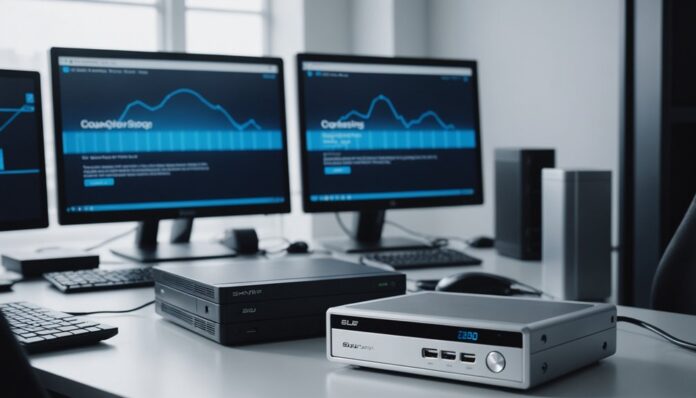Automatic data backup has become increasingly essential in 2025, with reliance on digital storage solutions growing by the day. Fortunately, developments in cloud services and built-in operating system features have streamlined this process. By leveraging tools like Windows’ File History and macOS’ Time Machine, individuals can set up regular backups without manual intervention. But with so many options available, selecting the right method and ensuring data security remain concerns that need to be addressed.
Highlights
- Set up automatic backups using built-in features like Windows File History or macOS Time Machine for secure and regular data backups.
- Choose a cloud backup service that offers data encryption, scalability, and accessibility for added security and protection.
- Prioritize backup frequency based on file importance, with daily or weekly backups for critical files and monthly or quarterly for less important ones.
- Use third-party backup software for advanced features and customization options to ensure all required data is included in backups.
- Regularly test and verify backup integrity to ensure efficient data recovery in case of a disaster or hardware failure.
Choosing the Right Backup Method for Your Needs
While numerous backup methods are available, selecting the most suitable one depends on individual needs and preferences.
Local storage, such as external hard drives, provides a secure and readily accessible backup solution. However, individuals with limited physical storage space may prefer cloud-based backup services.
The frequency of backups is another vital consideration. Users who frequently update files may require daily or hourly backups, while those with relatively static data may only need weekly or monthly backups. Evaluating data volume and usage patterns can help determine the ideal backup frequency.
Ultimately, the right backup method balances convenience, security, and cost-effectiveness. By understanding their needs and priorities, individuals can choose the most suitable backup solution to safeguard their data.
Regular backups can provide peace of mind.
Setting Up Automatic Backups on Your Computer
Implementing an automatic backup system on a computer is a straightforward process that guarantees data safety and minimizes the risk of information loss.
To set up automatic backups, one can employ the built-in File History feature on Windows or Time Machine on macOS. This feature allows users to select specific folders and files to be backed up at regular intervals.
Alternatively, users can opt for third-party backup software that offers more advanced features and customization options. Once installed, the software can be configured to run automatic backups at scheduled times, ensuring that all important files are safely stored.
Using Cloud Backup Services for Extra Security
Augmenting a computer’s automatic backup system with a cloud backup service adds an extra layer of security and protection for sensitive data.
Cloud storage benefits include scalability, accessibility, and redundancy, guaranteeing that critical files are safe from physical damage or loss.
When selecting a cloud backup service, individuals should consider data encryption options to guarantee the secure transmission and storage of their data. Many cloud backup services offer automatic encryption, while others may require users to implement their own encryption protocols.
By leveraging cloud backup services, individuals can ascertain their data is protected from various risks, providing peace of mind and minimizing potential data loss.
This extra security measure can prove essential in the event of hardware failure or other disasters.
Creating a Backup Schedule That Works for You
As the significance of regular backups cannot be overstated, establishing a reliable backup schedule is vital to guaranteeing the safety of essential data.
To create an effective schedule, it’s important to take into account backup frequency and priority files. Individuals should identify their most essential files, such as work documents, family photos, or financial records, and prioritize their backup frequency accordingly.
For most users, a daily or weekly backup of priority files is sufficient, while less critical files can be backed up on a monthly or quarterly basis.
Testing and Maintaining Your Backup System
Verifying the integrity of a backup system is a critical step often overlooked by individuals and organizations. To guarantee that backups are reliable and can be restored in case of a disaster, regular system verification is essential.
This involves checking for any errors or inconsistencies in the backup data and verifying that all required data is included. Backup restoration should also be tested regularly to guarantee that data can be recovered quickly and efficiently.
Conclusion
Automating data backups in 2025 is a straightforward process with the right tools and strategies. By leveraging built-in operating system features, cloud backup services, and a well-planned schedule, individuals can ascertain their sensitive information is secure and easily recoverable. Regular testing and maintenance of the backup system assure data integrity and availability, providing peace of mind in the face of unexpected data loss or corruption. A reliable backup system is now within easy reach.


